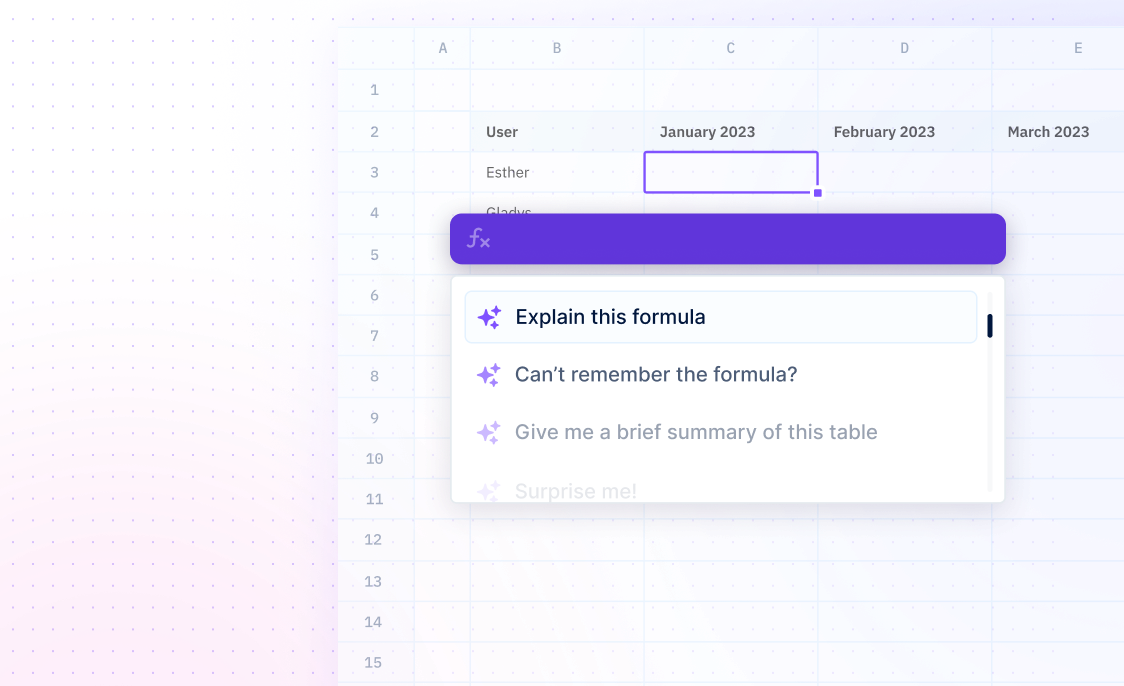
DOLLAR
Formulas / DOLLARThe DOLLAR function converts a numeric value into a text string formatted as currency, with the default currency symbol and a specified number of decimal places.
=DOLLAR(number, [decimals])
- number - The number to be converted to text and formatted as a currency.
- decimals - [OPTIONAL] The number of decimal places to display in the resulting text. If omitted, the default is 2 decimal places.
Examples
=DOLLAR(1234.567)This formula converts the numeric value 1234.567 into the currency-formatted text "$1,234.57" (assuming the default currency symbol is "$").
=DOLLAR(-987.654, 3)This formula converts the numeric value -987.654 into the currency-formatted text "-$987.654" with three decimal places, resulting in the text "-$987.654" (assuming the default currency symbol is "$").
Summary
The DOLLAR function formats a numeric value as a currency, rounding it to a specified number of decimal places and adding a currency symbol.
- The DOLLAR function converts a numeric value into a text string formatted as currency, using the default currency symbol for the system.
- The DOLLAR function allows users to specify the number of decimal places to display in the formatted currency string.
- The DOLLAR function is useful for displaying numeric values as currency in reports, dashboards, and financial statements.
Frequently Asked Questions
What does the DOLLAR function do?
The DOLLAR function converts a numeric value into a text string formatted as currency, with a specified number of decimal places and the default currency symbol.
Can I specify the number of decimal places in the DOLLAR function?
Yes, you can specify the number of decimal places in the DOLLAR function by providing the optional "decimals" argument. If omitted, the function defaults to two decimal places.
Can I use a different currency symbol with the DOLLAR function?
No, the DOLLAR function uses the default currency symbol set in your system or spreadsheet settings. To use a different currency symbol, you can manually format the cell or use custom number formatting.
What happens if I use a negative number as the input for the DOLLAR function?
If you use a negative number as the input for the DOLLAR function, the function will return a currency-formatted text string with a negative sign in front of the currency symbol.
Drop CSV


